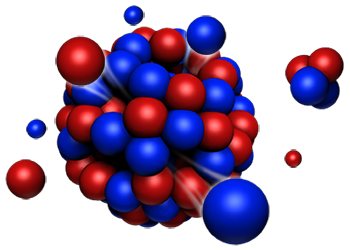Speaker
Description
The Spallation Neutron Source (SNS) at Oak Ridge National Laboratory uses a mercury target to generate neutrons. When a proton beam hits the mercury target, the deposited energy causes a very rapid rise in temperature that cause the mercury to cavitate and erode the vessel walls. To mitigate the cavitation erosion, small bubbles of Helium are injected into the mercury target using 50-60 small orifices (8-12 micron diameter) with a back pressure of 100 psig (choked flow condition). The bubbles generated by these bubblers have proven to be very efficient at reducing cavitation damage. However, the bubblers get clogged during operation and causing their flow rates to decrease with time. Consequently, there is interest in increasing the diameter of the orifices, such that the desired flow rate can be maintained constant during the target life and potentially extend the target lifespan. To get a better understanding on how the bubble size distribution will be impacted by the increase of the orifice diameter, a small water loop was built to determine the bubble size population generated by a single orifice inserted in a 2-inch pipe. Several orifices diameter, gas injection rate and water flow rates were used. It was found that above a certain water flow rate, the bubble size was independent of the orifice diameter. Thus, larger orifices could be used with lower back pressure during operation, and the pressure would be adjusted to maintain a constant flow rate as the orifices get clogged. Running the target at constant gas injection flow rate would allow to evaluate the efficiency of the gas injection more easily, and potentially allow us to have a better idea of what is the target lifespan with gas injection.

